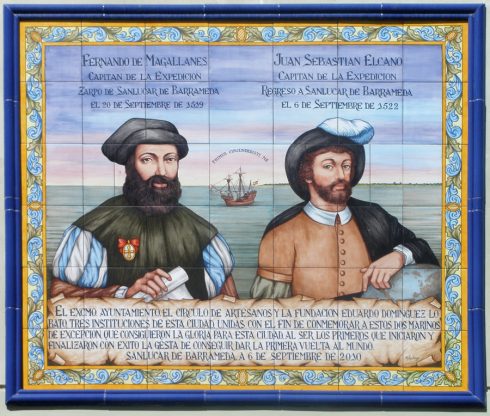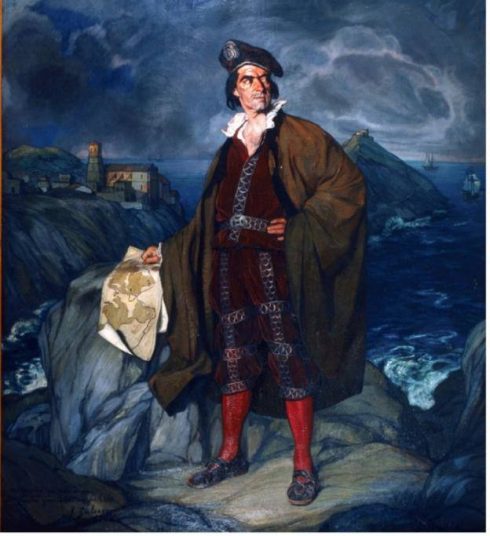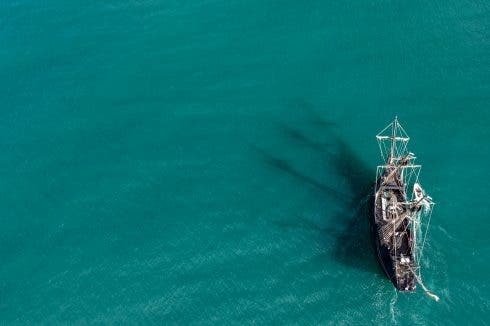IT is 500 years since Spanish explorer Juan Sebastian Elcano circumnavigated the world.
September 6 marks the anniversary of his return to Sanlucar de Barrameda (Cadiz) after completing the remarkable feat, just two decades after Columbus had discovered the Americas.
A fitting celebration involving a large flotilla of boats will be marking the event in both Sanlucar and nearby Sevilla, the final port of call.
The expedition had begun three years earlier on September 20, 1519, under the command of celebrated explorer Ferdinand Magellan.
Five ships set sail from Sanlucar but only one came back. Not many people realise that Portuguese navigator Magellan – so often credited with this feat of nautical exploration – only made it halfway.

Despite that, Magellan had been the mastermind – the man with the plan to find a trading route around the Americas to the Spice Islands.
Out of favour with the king of Portugal (for complicated reasons), he’d come to Sevilla seeking crew, boats, maps, first hand information from other explorers, and the financial backing of Charles I of Spain, all of which he got.
Equipped with his ships, (the Trinidad, Concepcion, Victoria, San Antonio and Santiago) and a crew of 250 men, he set off across the Atlantic.
Among his men was Elcano, a 43-year-old Basque sailor and ship owner, an expedition veteran who’d been living in Sevilla and had joined the venture as a ship’s master.
There’s a plaque beside the beach in Sanlucar of Magellan and Elcano, which suggests they were equals and allies.
In fact, just seven months into the trip, as the fleet bobbed off Patagonia, in Argentina, Elcano took part in a mutiny against Magellan. He was spared (others were not) and served five months of hard labour on shore in chains as a consequence.
The circumnavigation was ultimately a triumph but it wasn’t without its problems. Visit the full-scale replica of the Victoria (once it’s back at its moorings in Sevilla) and you’ll marvel how any of these narrow, 26-metre wooden sailing boats got anywhere.
The Santiago, sent to hunt around the southern tip of South America for a passage from the Atlantic to the Pacific, was wrecked in a storm. The crew of another ship, the San Antonio, deserted and sailed it back to Spain.

After successfully finding the passage, later named the Strait of Magellan, and entering the Pacific, several of the crew on the three remaining boats got sick and died from scurvy and malnutrition.
On arriving in Cebu, in the Philippines, Magellan got to work immediately, converting the locals to Christianity and forging allegiances.
He lasted three weeks before being killed in a battle (on April 27, 1521).
Days later, two captains, Barbosa and Serrano, who had stepped up to jointly fill Magellan’s shoes, were invited to a local tribe’s banquet and massacred along with 27 sailors.
The depleted fleet sensibly moved hurriedly on, abandoning one, the Concepcion, because there weren’t enough sailors left to sail it.
Just two ships reached the Moluccas, the fabled Spice Islands of Indonesia, after two years and a month at sea.

The boats were stuffed full with ginger, nutmeg and cloves but, as they were about to set off for home, the Trinidad sprang a leak, and had to stay behind. The new expedition leader and 53 sailors elected to stay behind too.
Elcano’s rise through the ranks was helped by a combination of various misadventures and staying alive.
He’d ended up captaining most of the ships, and now he was in charge of the last ship sailing for home.
He skilfully brought the one remaining boat, the Victoria, around the Cape of Good Hope, and up the coast of West Africa.
He finally sailed into Sanlucar in September 1522 with a total of just 18 men out of the 250 who had set sail… and fittingly their names are all listed on a plaque on the library beside the town’s square Plaza de Cabildo.
In a letter to Charles I, Elcano marvelled at the roundness of the world, and told him his crew had spread peace, forged alliances, collected spices, and endured sweat, hunger, thirst, cold and heat.
The king rewarded Elcano with a large reward of ducat coins and sent him on a new expedition to the Pacific three years later.
It would have made him one of the country’s richest men on his return, but as fortune would have it he ended up dying of scurvy in 1526.
ELCANO COMMEMORATION WEEK
To mark Elcano’s amazing voyage, the V Centenary Festival begins at Sanlucar (Cadiz) on September 6 with a flotilla of naval ships.
The replica of the Victoria will cross the mouth of the Guadalquivir, 500 years to the day, and lead a procession of boats upriver, past the shores of Bajoquía and Bonanza.
Also in Sanlucar on September 6, the cyclists of the Vuelta de España, begin stage 16 of their own long-distance endurance endeavour at noon. And the Royal Symphony Orchestra of Sevilla performs Magallanes Requiem in memoriam in a grand marquee beside the Paseo Maritimo in the evening.
On September 7, the Victoria and accompanying boats will sail past the towns of Puebla del Rio and Coria del Rio, arriving in Sevilla the following day where festivities continue September 8-11 at Muelle de las Delicias. (tickets at festivalvcentenariosevilla.org).
Expect artisans market; historical reenactments; demonstrations by potters, glass blowers, blacksmiths; theatre; puppet shows; and food ‘served in a vintage maritime atmosphere’.
Afterwards the Victoria will be open to visitors, moored beside the First Around the World interpretation centre (Paseo Marqués de Contadero).
READ MORE:

